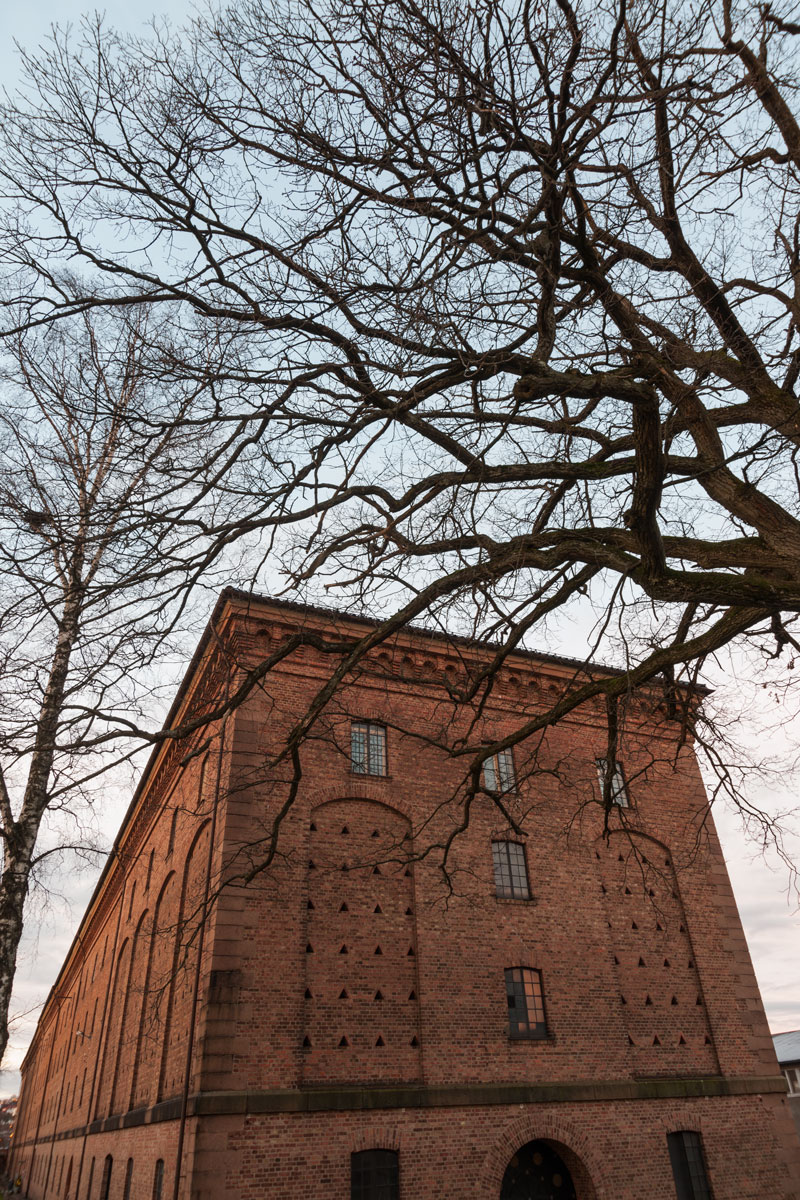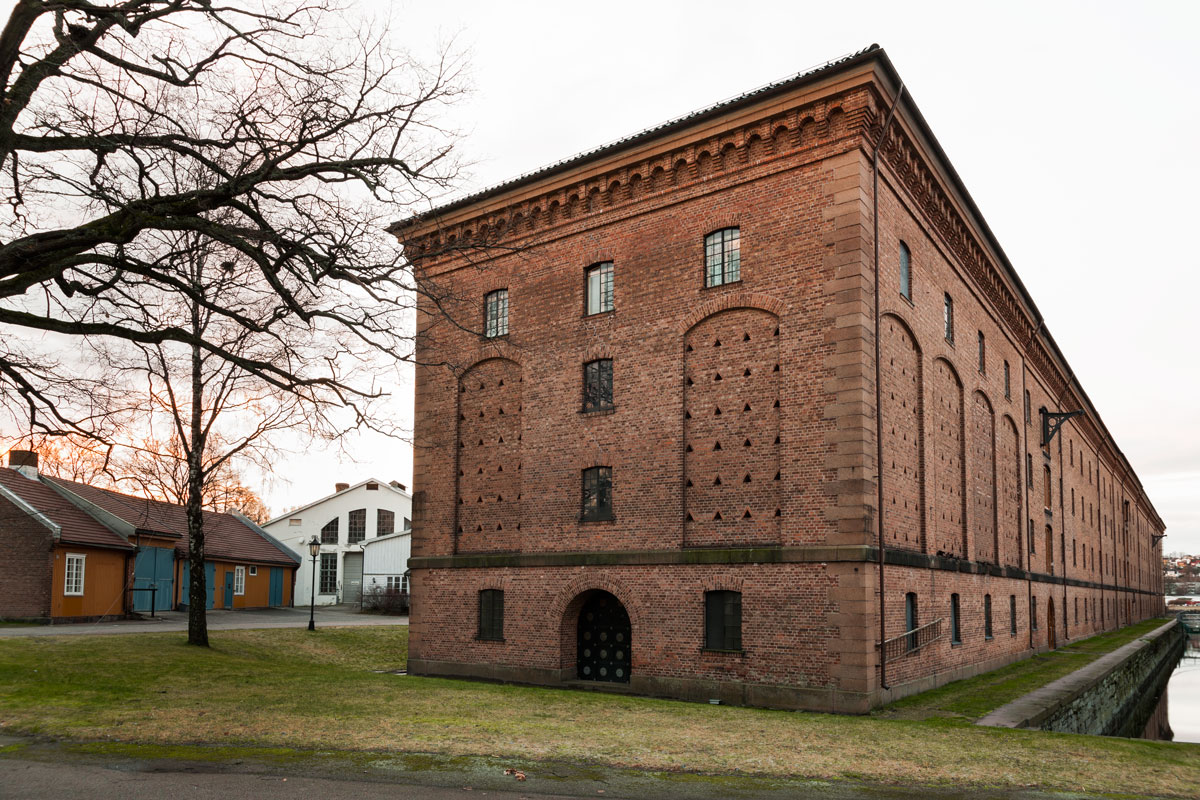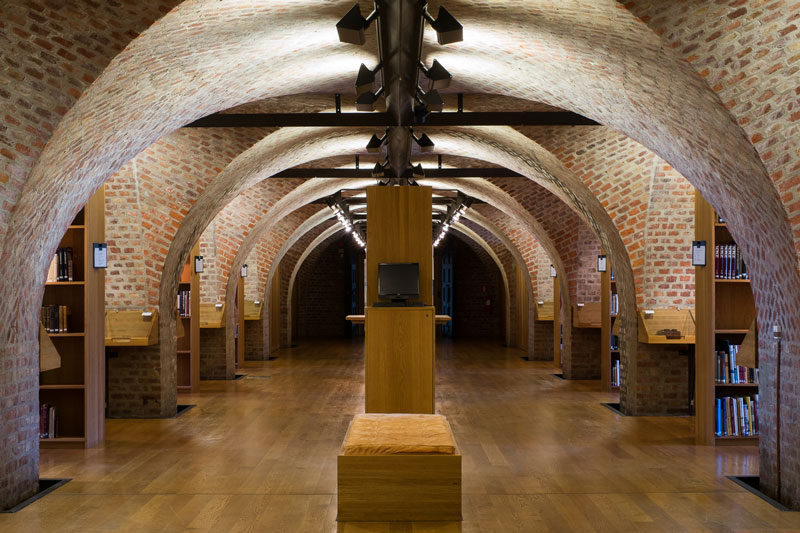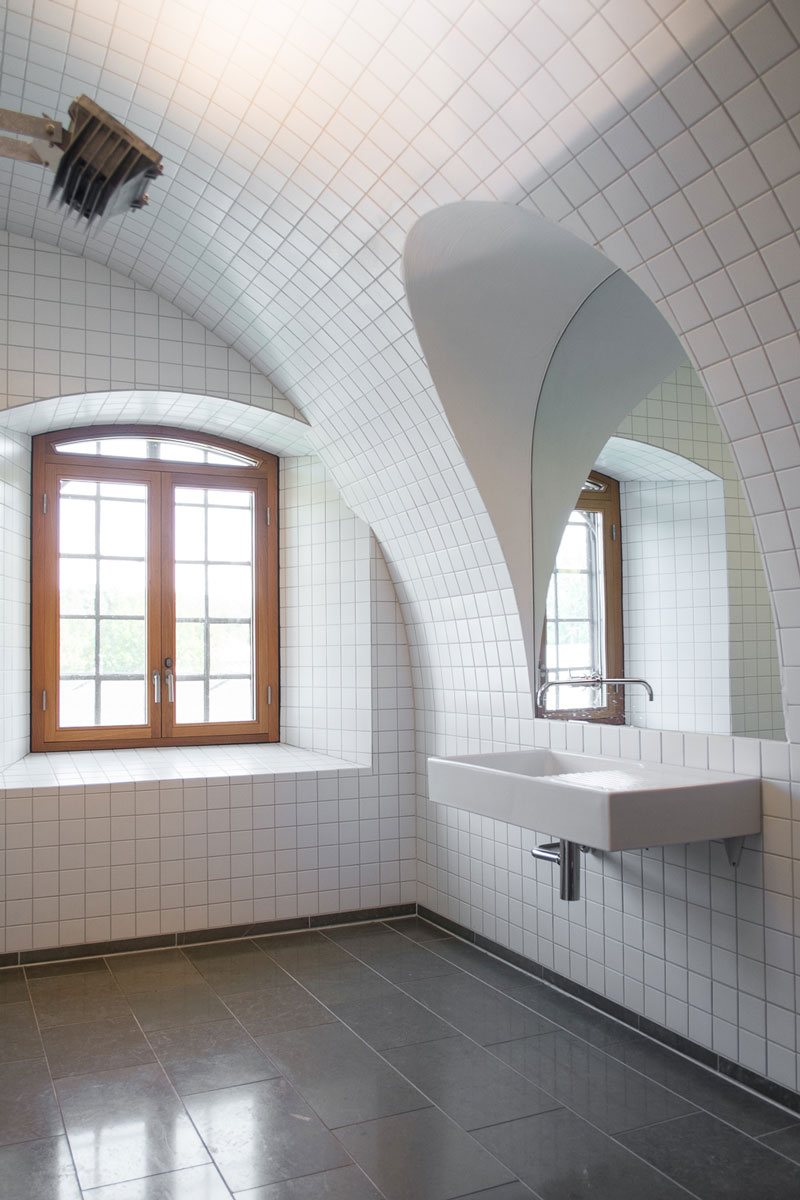The History of the Building

Preus museum - Built according to the same thougts as Moroccan Bazaars!
* Arkitekt Professor Sverre Fehn
Preus Museum is situated on the fourth floor of Magasin A, a building constructed in the 1860s for the Navy. It was probably designed by Captain Poul Lemvig Thrane (1814-1892).
Magasin A
The building is owned by the Armed Forces, and the Royal Norwegian Navy Museum has been situated there since 1864. The building was originally a storehouse for the Navy and included grain storerooms at the end. It is 157 x 15 meters along the outside walls; the interior is divided into a series of small cells, many of which are divided into cubicles with a middle passage and curved walls. These divisions created major challenges for architect Sverre Fehn (1924-2009) when in 1998 he was given the task of preparing for the museum. Preus Museum opened to the public 26 May 2001. Today the building is owned by Nasjonale Festningsverk (National Fortifications Heritage).
The site
Horten has a long tradition as a site of ferry and hospitality activity with reliable records back to the end of the 1500s. Shipbuilding also took place. A royal declaration of 21 November 1818 designated Horten as the Navy's main site of operations. Ten years later the first ship set sail from the Naval Dockyard. The Navy's main site of operations was moved in 1963 to Haakonsvern outside of Bergen. Today much of the space in Karljohansvern has gone over to the private sector.
Poul Lemvig Thrane (1814-1892)
Married 1837 to Eleonore Benedicte Thrane. Three children. Head of the Engineering Detachment at the Navy center of operations 1850-59. Beginning in 1853 Thrane directed the construction of Horten church, designed by architect L.H. Grosch. The church was dedicated 22 August 1855 with King Oscar I, the crown prince, and the heir presumptive present. Thrane was lieutenant colonel in the Engineering Brigade in 1881.
Sverre Fehn (1924-2009)
One of the best-known Norwegian architects internationally. He had an architectural practice in Oslo and was a professor at Arkitekthøyskolen (School of Architecture and Design) 1971-1995. Fehn was a modernist and broke through with the Norwegian Pavilion at the 1958 Brussels World's Fair and the Nordic Pavilion at the 1962 Venice Biennial. Later he distinguished himself above all as a museum architect: Hedmark Museum (1967-69) in Hamar, Norwegian Glacier Museum (1992-95) in Fjærland, Aukrustsenteret (1996), Ivar Aasen-tunet in Ørsta (2000), Norwegian Museum of Photography – Preus Fotomuseum (1998-2001), and the National Museum – Architecture (2008). In 1997 Fehn received the Pritzker Architecture Prize, the most distinguished award given to architects, and he received the Grosch medal in 2001.
Architecht Professor Sverre Fehn was awarded the Pritzker Architecture Prize in 1997, the architect's grandest price, and he was the first one who was appointed the Grosch-medal in 2001.

Photo: Astrid Roberg









